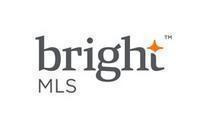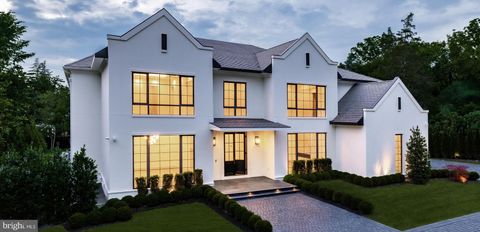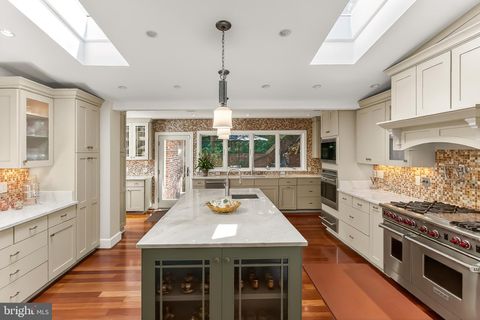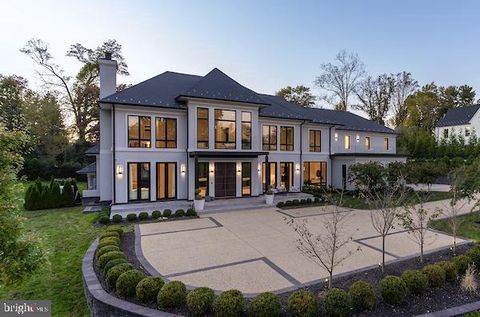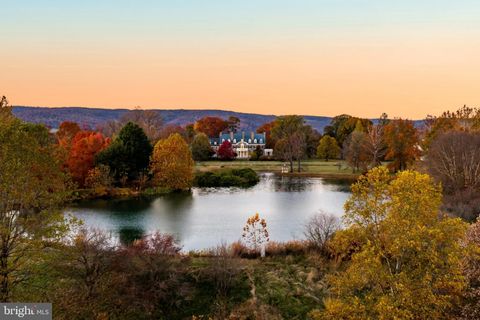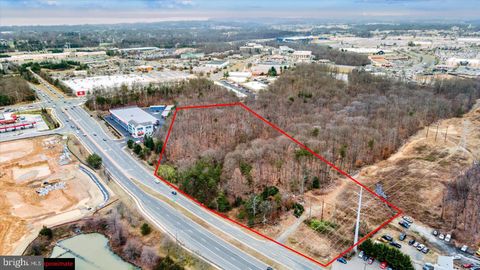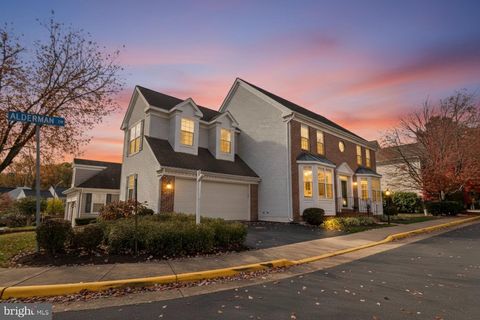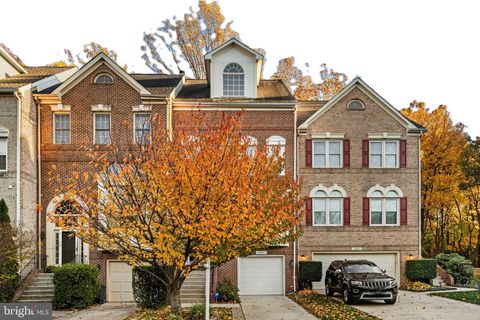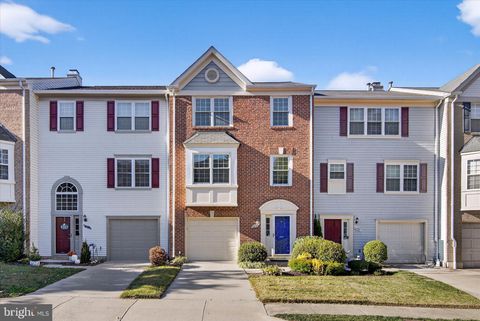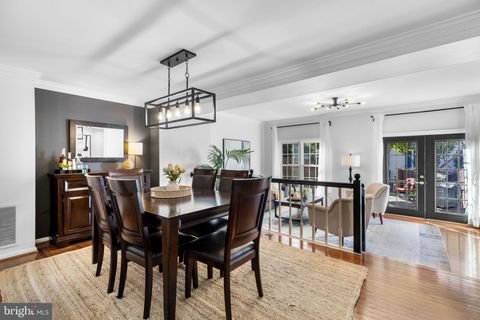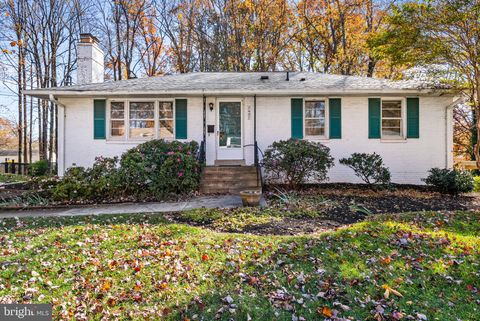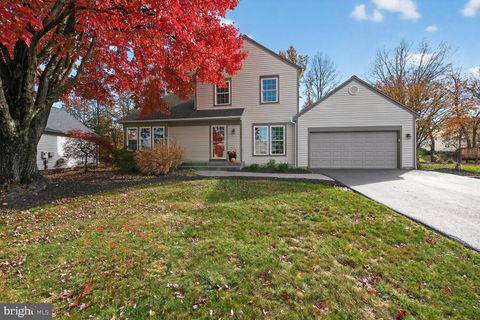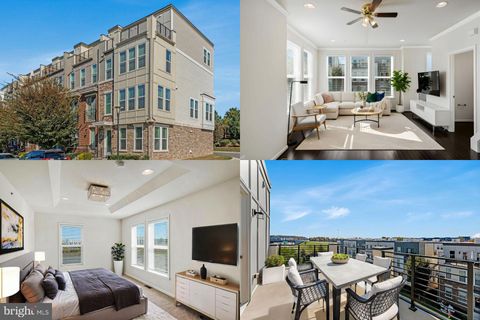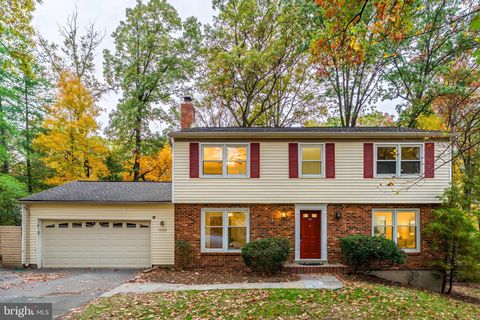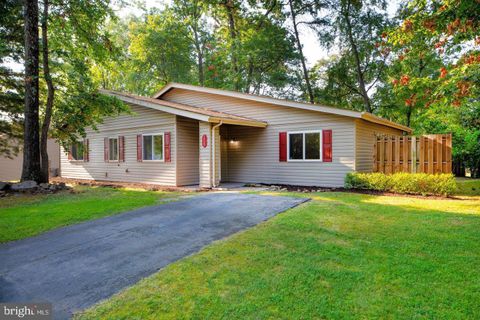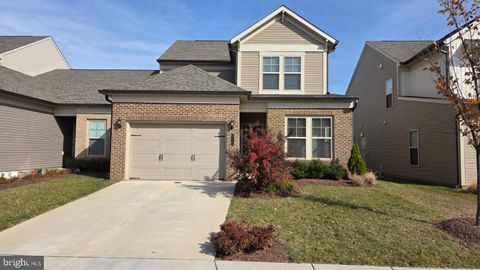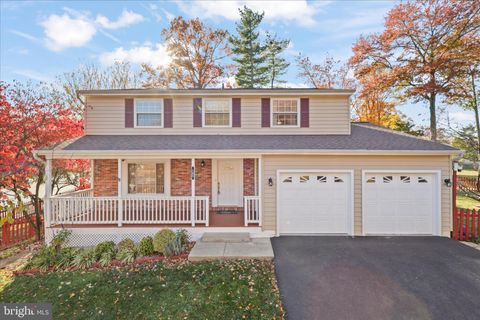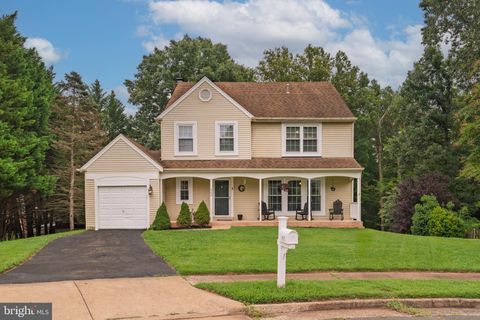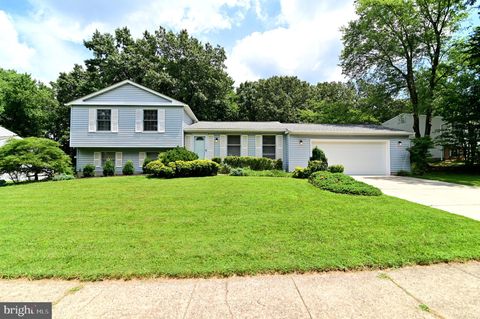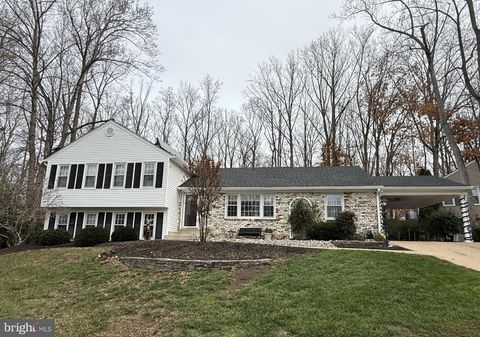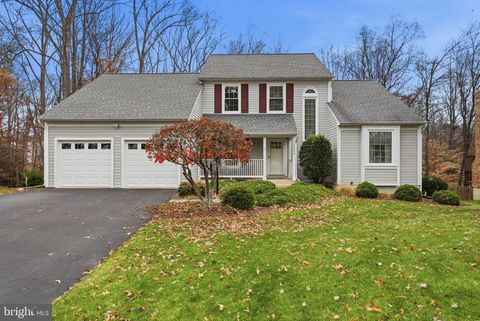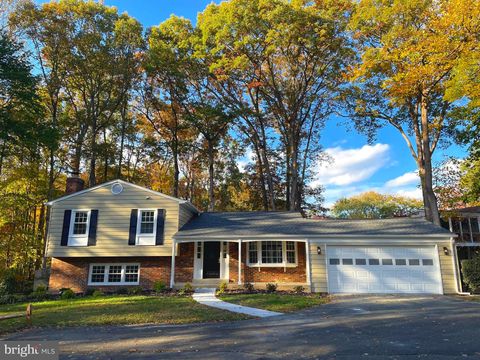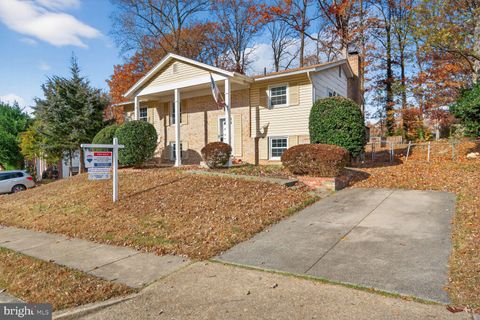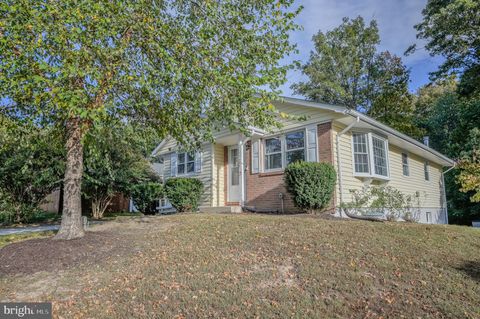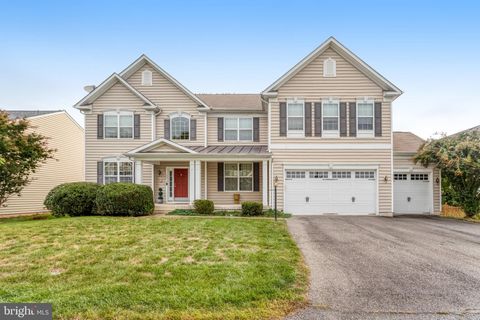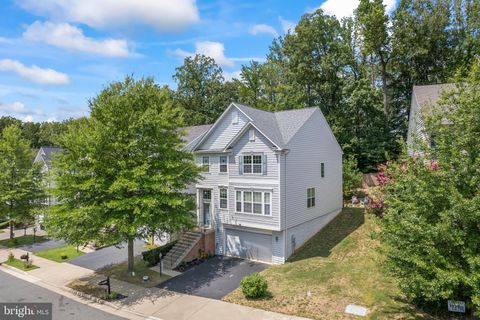Embarking on a new journey being stationed at the Pentagon? Then you’ll need some help in navigating Northern Virginia.
We’ll run you through some key information to ensure your transition here is smooth and suits your lifestyle – we’ll be talking about commuting, finances, and more, and we’ll help you know more about the counties that make up Northern Virginia.
So, without further ado, let’s find your perfect home base.
Living in Northern Virginia
First things first, let’s get to know the area you’re moving into. Northern Virginia is known for several things, making it a sought-after place to live in or visit.
It has such a diverse business landscape that’s led by technology-based companies and government contractors, and it’s headquartered by big-named companies like Freddie Mac, Capital One, and Northrop Grumman.
Plus, Northern Virginia is home to some of the top-ranked schools nationally, be it public or private. Based on Scholaroo’s data, which ranked each state’s public schools based on student success, student safety, and school quality, Virginia ranks 10th for the best public schools in the country. Most of these schools are located in Northern Virginia.
Combining both its strong economy and excellent schools, Northern Virginia is also known for its highly educated, high-income workforce.
When it comes to recreation and entertainment, there are plenty to choose from here. From horseback riding and exploring vineyards in rural NoVA’s rolling hills to shopping til you drop and tasting cuisines from all around the world in the many vibrant urban hotspots, there’s something that suits everyone’s preferences here.
Practice your swing at many of the premier golf courses in the area, go rock climbing or whitewater rafting on the Potomac River, hike an endless network of trails, and appreciate a bit of history with the many historical landmarks dotted throughout Northern Virginia.
This is just a glimpse of what you can expect from living here because we’ll get into more detail in the next section.
Regions of Northern Virginia
Northern Virginia is made up of several counties, and we’ll give you a quick overview of each below, along with some popular cities worth mentioning for someone who’ll work at the Pentagon.
Arlington County
Arlington is the county located immediately south of the nation’s capital. Known for its great neighborhoods, excellent workforce, vibrant art and culture, and energetic urban vibe, this is an excellent place to work and live.
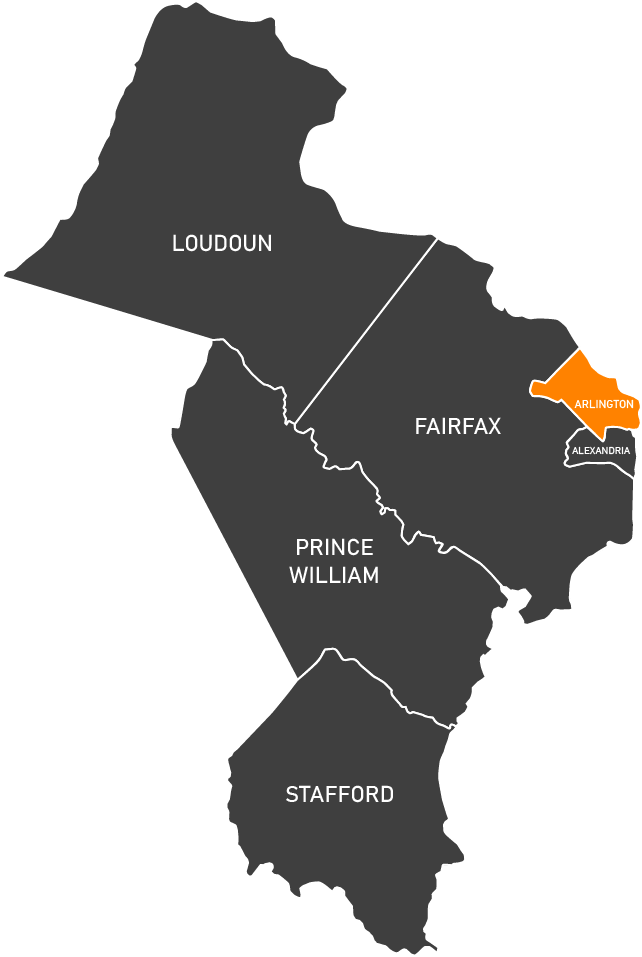
Home to the Pentagon, Fortune 500 companies, high-tech companies, and startup companies, especially in Clarendon, the diverse job market here is why Arlington’s population swells to around 279,100 people during the day and why it’s one of the richest counties in the country. And when it’s time to have fun, you’ve got numerous shopping options, a great nightlife, and tons of restaurants, bars, and bakeries, that boast flavors from around the world with a local flare.
For its top-notch education, nightlife, family-friendly amenities, outdoor activities, commute, and diversity, Niche rated Arlington the second-best city to live in America, although it’s really a county rather than a city.
Fairfax County
Bordering Arlington to its northwest and southwest is Virginia’s most populous county, Fairfax County. To me, this is the land of extremes here because of the sheer wealth of history, dining and shopping options, and more that it has to offer.

It’s well known that Virginia has a rich history that dates back to the 1800s, but Fairfax County’s goes way before that as it was formed in 1742 which was 30 years before the signing of the Declaration of Independence. The county has seen numerous historical events and is home to 455 historical markers, such as George Washington’s Mount Vernon.
Despite that, the county’s sophisticated urban vibe is one of its strengths. It’s home to some of the best public and private schools in the nation, such as Thomas Jefferson High School for Science and Technology, one of the best high schools in the nation.
Fairfax County also boasts one of the highest densities of technology jobs among all major markets in the United States. Plus, it’s headquartered by 11 Fortune 500 companies, some of which are Capital One and Booz Allen Hamilton, both of which are in the Tysons Corner area, home to the largest shopping mall in the Baltimore-Washington area. With large immigrant populations, Fairfax County features a lively and diverse culinary landscape, showcasing cuisines from around the world, especially Asian.
Now, it’s not all about urban convenience in Fairfax County. With some parts bordering the Potomac River and over 400 parks and open spaces here, there are plenty of outdoor adventures to be had.
Loudoun County
Northwest of Fairfax is Loudoun County. While it’s quite rural compared to the previous counties mentioned, Loudoun is still a well-visited place for a few reasons.

Loudoun has rich agricultural roots that remain strong today, despite the rapid urbanization of Northern Virginia. Farms are still a big contributor to its economy, fueling the local diverse culinary scene with locally sourced goods.
Loudoun’s agricultural industry is most known for its orchards and vineyards that sit on rural Virginia’s rolling hills, which brought about over 50 top-notch wineries that many come to visit. Thus, Loudoun is proudly called “DC’s Wine Country”, though it also has a wealth of breweries and distilleries dotted around the area.
Situated between the Blue Ridge Mountains and the Potomac River, Loudoun has the perfect setting for outdoor fun. Go hiking and find gorgeous views at scenic overlooks on the Appalachian Trail, go on an adventure and bike the Washington & Old Dominion Trail, zoom past trees as you zipline forest canopies, or paddle the Potomac River. With the county’s love for horses, it has the highest number of equines in the state, hosting large-scale equestrian events, and boasts premier competition venues.
On the flip side, the eastern part of Loudoun is also a suburban haven – master-planned communities like Brambleton, shopping centers like the Leesburg Premium Outlets, and the strong presence of tech in Ashburn, which is the largest and fastest-growing data center hub in the world.
Loudoun is pretty young, especially when it comes to homes, with a majority of them built after the 2000s, making it an excellent choice for those looking for new construction homes. It’s the fastest-growing county in the state, and there’s more to look forward to here as far as infrastructure and urbanization go.
Prince William County
Southwest of Fairfax lies Prince William County, known for its charming rural vibe, a collection of historic small towns, beautiful outdoors, and a growing arts and entertainment scene. Three significant national sites are located within the county – Manassas National Battlefield Park, the National Museum of the Marine Corps, and the Prince William National Forest – giving you a glimpse of the rich history here.
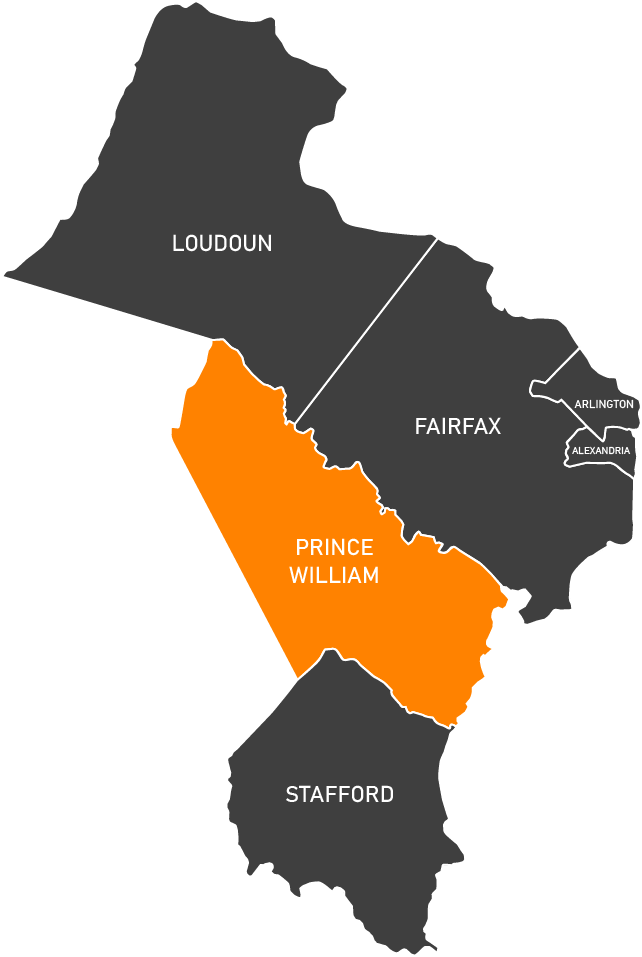
Home to a portion of the Quantico base, a great chunk of the workforce here is employed by the military sector, followed by the government, given its proximity to the nation’s capital. Benefiting from a well-educated and proficient workforce, coupled with the rise of high-tech companies in the area, the technology sector has a strong presence in this locality.
When it comes to outdoor adventures, you’ve got plenty of options here no matter your preference. Boasting two national, 42 local, four regional, and one state park, along with a large lake and ponds throughout the county, Prince William has a spot for hiking, horseback riding, fishing, and more.
Stafford County
The southernmost county in Northern Virginia, Stafford County is a delightful mix of historical charm, the great outdoors, and top-notch wineries and breweries. Historical sites dot Stafford, such as the Stafford Civil War Park, the Patawomeck Museum & Cultural Center, and the Chatham Manor. Home to five local breweries, vineyard tours, and tasting award-winning wines are an easy weekend getaway here.
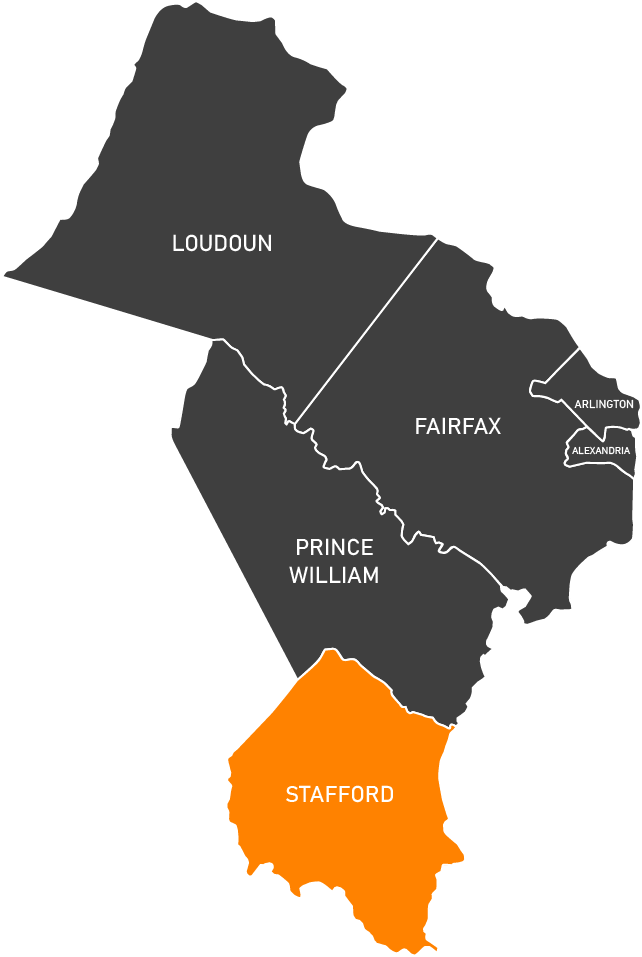
Enjoying the natural beauty of Stafford is an easy task since it’s home to many parks and natural areas. Go hiking and enjoy the waterfront views at Government Island Park, head for some water fun and fishing at Rappahannock River, or take a dip and sunbathe at Aquia Beach Park.
A portion of the Quantico base is within this locality, making it another option for those working there.
Alexandria
Now, Alexandria isn’t a county but a city, situated just beside Arlington County and along the banks of the Potomac River, just across Washington. Old Town Alexandria, its historic center, is a lively hub of local stores, and excellent and award-winning restaurants situated within colonial-era architecture along cobblestone streets.
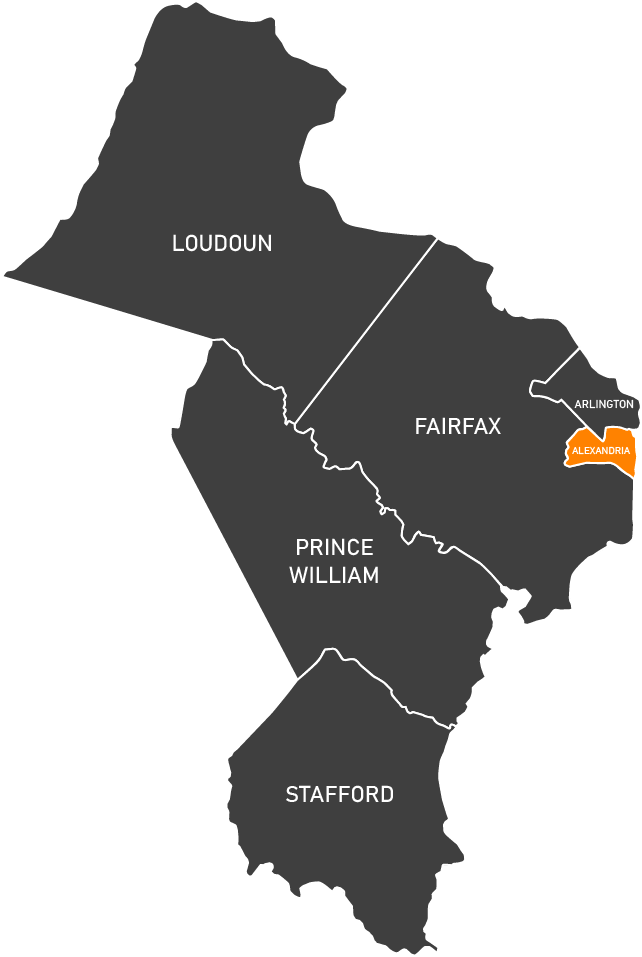
Alexandria boasts a vibrant arts and culture scene, ranging from popular galleries like the Torpedo Factory Art Center and the Athenaeum to popular live entertainment hubs like Birchmere Music Hall and MetroStage.
Despite all the hustle and bustle in Alexandria, you’ve got spots for slow days too. Take in the views of the scenic waterfront, go on a picnic or dockside dining, or cruise along the Potomac River.
Location of the Pentagon
Let’s talk about the location of the Pentagon next in relation to the Northern Virginia regions mentioned above as this will be crucial for you to determine the best place to live in. While the Pentagon is located in Arlington County, it has a Washington address – six D.C. zip codes, to be exact.

Radiating from the Pentagon are easily accessible major roads that make the rest of Northern Virginia accessible:
- I-66: Goes through Arlington, Oakton, Vienna, and Centreville in Fairfax County, going as far as Middletown; Intersects with 1-495 roughly at the Dunn Lorring-Merrifield Station.
- I-495: Runs vertically to the west of the Pentagon, and connects with I-66 and several other smaller roads that lead to the Pentagon.
- I-395: Runs from US 50 (New York Avenue) in D.C. and on the Arland D. Williams Jr. Memorial Bridge, to Shirlington in Arlington, Lincolnia in Fairfax County, and ends at I-95/I-495 in Springfield in Fairfax County
- I-95: A north-south road interstate highway that runs through Virginia. Within I-495 (the Capital Beltway), I-95 is known as I-395.
- US Route 1: A major north-south route that goes through Alexandria all the way to Stafford County
- US Route 50: Starts from the D.C. border at a Potomac River crossing at Rossylin in Arlington, intersecting with I-495 at Falls Church City, to Chantilly in western Fairfax County, through Aldie and Middleburg in Loudoun County, all the way to the West Virginia state line.
- State Route 244: Starts at the Pentagon and goes all the way to Annandale in Fairfax County.
From the map above, you’ll see that Arlington and Alexandria or even some parts of Fairfax County are great places to live in if you work at the Pentagon just because they’re pretty close. But proximity alone isn’t enough here because Northern Virginia is notorious for traffic, especially on the interstates. You may live just 5 miles away from the Pentagon and spend an hour on the road, and you could also live 15 miles away and be there in under an hour.
That’s why we’ll be talking about your commuting options to the Pentagon next.
Commuting to the Pentagon
There are four ways to commute to the Pentagon, you either drive, take the bus, take the metro, or the VRE. Though your choices really depend on where you live, because in most cases, you’ll only have three of them.
Driving
Now whether you like it or not, traffic will be a part of your daily life here in Northern Virginia. In the previous section, we talked about some useful roads when commuting to the Pentagon, one of which is I-95.
Much of Northern Virginia’s traffic is along I-95, where there’s an average of 23 traffic jams in a day. But really, virtually every major thoroughfare here is congested, especially during rush hour, between 8 AM to 10 AM and 4 PM to 6 PM.
It tends to be busier in areas around the beltway, especially if you move closer to Arlington and the capital. A lot of Northern Virginia residents moved to areas farther away from D.C., such as Merrifield, Springfield, and Tysons Corner. This increased the through traffic of major roads, thus, it tends to be busier in areas around the beltway, especially if you move closer to Arlington and the capital.
We got traffic out of the way first because that’s gonna be your biggest hurdle when driving to work, and most residents (73%, to be exact) drive to get around Northern Virginia. And for some places, driving remains to be the easiest option.
Northern Virginia’s infrastructure is better in the areas closer to D.C., which is no surprise. For some regions, like the western part of Loudoun County, there’s no railway, very few metro stations, and only a small network of bus routes. Great Falls in Fairfax County, for example, has practically no public transportation if you take a look at this map. This is why 98.2% of its residents own at least one car, and of that percentage, 56.8% of them own 3 vehicles or more, 34.7% of them own two, and 6.7% only own one.
Taking your vehicle to work, you’re gonna have to park it somewhere. Keep in mind that public parking isn’t available at the Pentagon. But you can also apply for permit parking if you wan the convenience of parking within the Pentagon lots. Otherwise, you can opt for street parking that’s available both in Crystal City and Pentagon City or look for commercial lot parking spaces just a short walk or metro ride to the Pentagon.
Out of all the regions we discussed, commuters are more likely to take public transportation than driving alone in Arlington, where 47% of commuters use transit. Second to Arlington is Alexandria, whose transit usage for commuters is at 35%. As for the mode of transportation, 77% of Northern Virginia residents use the train for at least part of their commute, while only 23% take the bus.
Bus
For the purpose of organization, we’ll divide bus services into two: those that connect you directly to the Pentagon, and those that are useful for commuting around Northern Virginia. In some places, you could use both in conjunction and you never have to get behind the wheel.
Bus Services for the Pentagon
The Washington Headquarters Services Transportation Management Program Office (WHS TMPO) manages transportation services at the Pentagon and the Mark Center. These services include shuttle buses, ride-sharing, and providing personnel who work at both locations with commuting information.
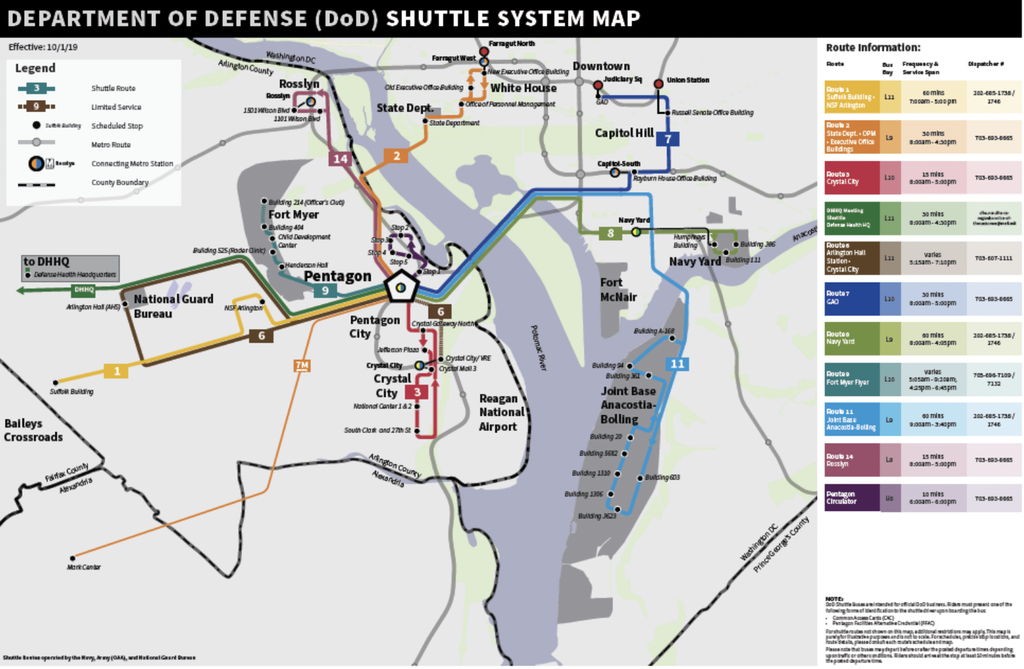
The DoD Shuttle Bus Program facilitates the movement of personnel between the Pentagon and various destinations across the National Capital Region (NCR). These locations include the U.S. Department of State, the New and Old Executive Office Buildings, the Office of Personnel Management, Capitol Hill, the Washington Navy Yard, Joint Base Myer-Henderson Hall, Joint Base Anacostia-Bolling Base, the Defense Health Headquarters, and the Mark Center.
The DoD Shuttles pick-up at the Pentagon Transit Center (PTC) lower-level bus bays L8-L11. The PTC is the largest transit hub in Northern Virginia and is located on the east side of the building. Keep in mind that these shuttle buses are for official use only, such as meetings and conferences, and aren’t to be used for home-to-work purposes. The Pentagon Circulator offers free transportation for all personnel on the Pentagon Reservation. It follows two routes – one services parking lots on the north side of the Pentagon while the second one services parking lots on the south side along Army Navy Drive. The Circulator is open from 6 AM to 6 PM on the weekdays and runs every 10 minutes. It picks up commuters at the Pentagon Transit Station at the upper-level bus bay U8.
Other Bus Services
There are several operators that offer bus services for mass transportation in Northern Virginia, many of which are bound by their counties. We’ll give you an overview of each and link you to their websites so you’ll know more details about each one – schedules, routes, and every other relevant detail.
- WMATA’s Metrobus: Metrobus operates 24 hours a day, seven days a week, providing service to the nation’s capital with a fleet of 1,500 buses. These bus services have routes all over Northern Virginia.
- Arlington Transit (ART): Arlington Transit complements Metrobus in Arlington County by offering cross-county routes and neighborhood connections to the Metrorail system. These bus services have extensive routes in and around Arlington – you can take a look at a route map here.
- Fairfax Connector: Fairfax Connector stands as the largest local bus system in the Northern Virginia region, serving around 26,000 passengers across 93 routes on a daily basis. Here’s an extensive map of this operator’s bus routes, including several other details that may help your commute
- Alexandria Transit Company’s (ATC) DASH: The DASH system by the Alexandria Transit Company offers free local bus services within the City of Alexandria. It also links up with Metrobus, Metrorail, Virginia Railway Express, and other local bus systems. Take a look at their bus route and schedules here.
- Loudoun County Transit: Loudoun County Transit offers public transportation services within Loudoun County and to specific commuting destinations. They offer bus services from Park and Ride lots located around the county to Rosslyn, Crystal City, the Pentagon, and D.C. Other services include local-fixed routes and Metro Silver Line bus routes.
- Potomac and Rappahannock Transportation Commission (PRTC)’s OmniRide Bus: OmniRide serves as the operational designation for the mobility services provided by the PRTC. OmniRide bus services are available in Prince William County, Manassas City, and Manassas Park City.
Metro
Washington’s Metrorail is the second busiest busiest system in the country, offering reliable transit for over 600,000 customers daily and servicing 98 stations in Virginia, Maryland, and the District of Columbia. The Metrorai has six color-coded rail lines: Red, Orange, Silver, Blue, Yellow, and Green. The system’s design allows for travel between any two stations with only a single transfer at most – take a look at this system map below.

- Red Line: The Red Line is the oldest and busiest line. It consists of 27 stations spread across Montgomery County, Maryland, and Washington, D.C. and is the only line that doesn’t share tracks with any other Metrorail line.
- Orange Line: The Orange Line consists of 26 stations in Fairfax County, Arlington, District of Columbia, and Prince George’s County, Maryland. It runs from Vienna, Virginia to New Carrollton, Maryland. This line shares half of its stations with the Blue Line and two-thirds of it with the Silver Line.
- Silver Line: The Silver Line consists of 34 stations spread across Loudoun County, Fairfax County, Arlington County, Washington D.C., and Prince George’s County, Maryland.
- Blue Line: The Blue Line consists of 28 stations located in Fairfax County, Arlington, Alexandria, Washington D.C., and Prince George’s County, Maryland. It shares tracks with the Orange Line, Silver Line, and Yellow Line, with only three stations exclusive to the Blue Line.
- Yellow Line: The Yellow Line is the shortest in the system, consisting of 13 stations in Fairfax County, Alexandria County, Arlington County, and Washington, D.C. This is the only line in the system that doesn’t enter Maryland.
- Green Line: The Green Line consists of 21 stations in Washington, D.C. and Prince George’s County, Maryland.
Which stations or lines are going to be relevant to you in your commute to the Pentagon? Which region or town or city should you live in to get easy access to them?
Well, the Pentagon Metro Station is directly in front of the Pentagon, just to the south. Other nearby stations that you may find useful are the Pentagon City Metro Station and the Crystal City Metro Station.
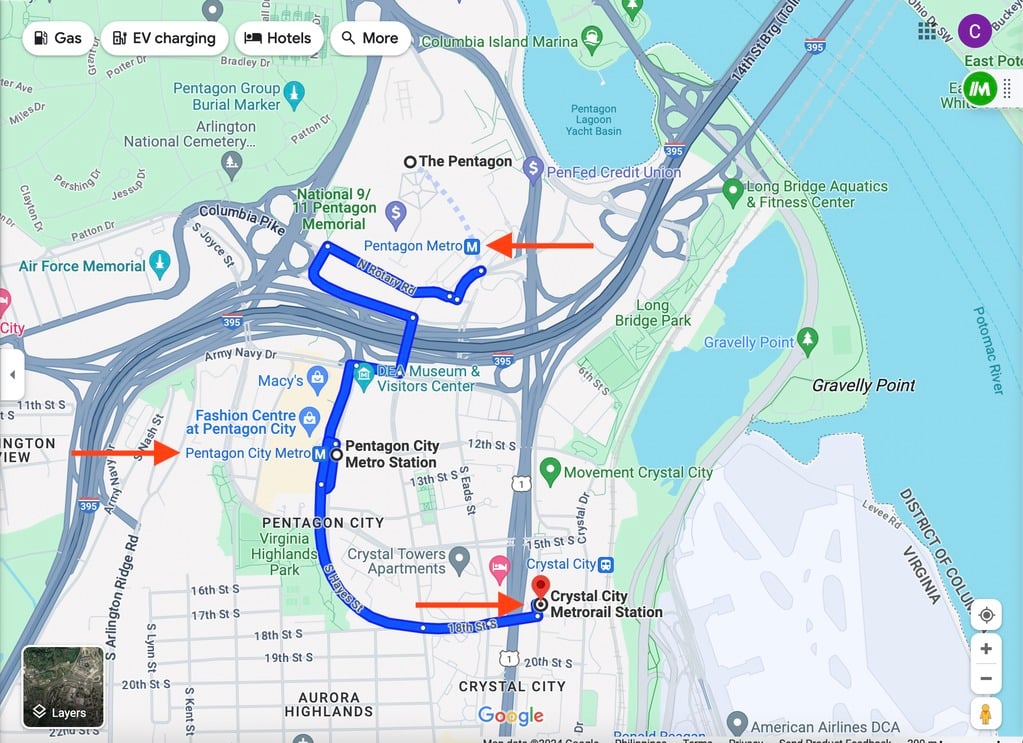
All three of these stations are on the Blue and Yellow lines, on the southern end. The regions either one of these two goes through are Fairfax County, Arlington County, Alexandria, and Washington, D.C. The southernmost end of the Blue Line is Franconia-Springfield Station, which is in Springfield, Fairfax County. Meanwhile, the southernmost end of the Yellow Line is Huntington Station, which is in Alexandria.
So if you want to take the metro routinely, you’re best bet is to live in Arlington or Alexandria and you could also choose Fairfax County. You can live somewhere close to the Franconia-Springfield Station on the Blue Line for an easy, straightforward commute to the Pentagon. You can even live in northwest Fairfax County in places like McLean, Falls Church, or Vienna because these parts of Fairfax County are well connected by the Metro’s Orange or Silver Lines. The Metro’s Silver line also reaches as far as Ashburn in Loudoun County, so if you’re interested in buying a property there, it’s doable. You just have to stop at the Rosslyn Station, which serves the Blue, Orange, and Silver lines!
Virginia Railway Express (VRE)
The VRE is the state’s commuter rail system, connecting Northern Virginia suburbs and the Washington, D.C. area through rail services along the I-66 and I-95. The VRE has two lines: the 60-mile Fredericksburg Line and the 35-mile Manassas Line.
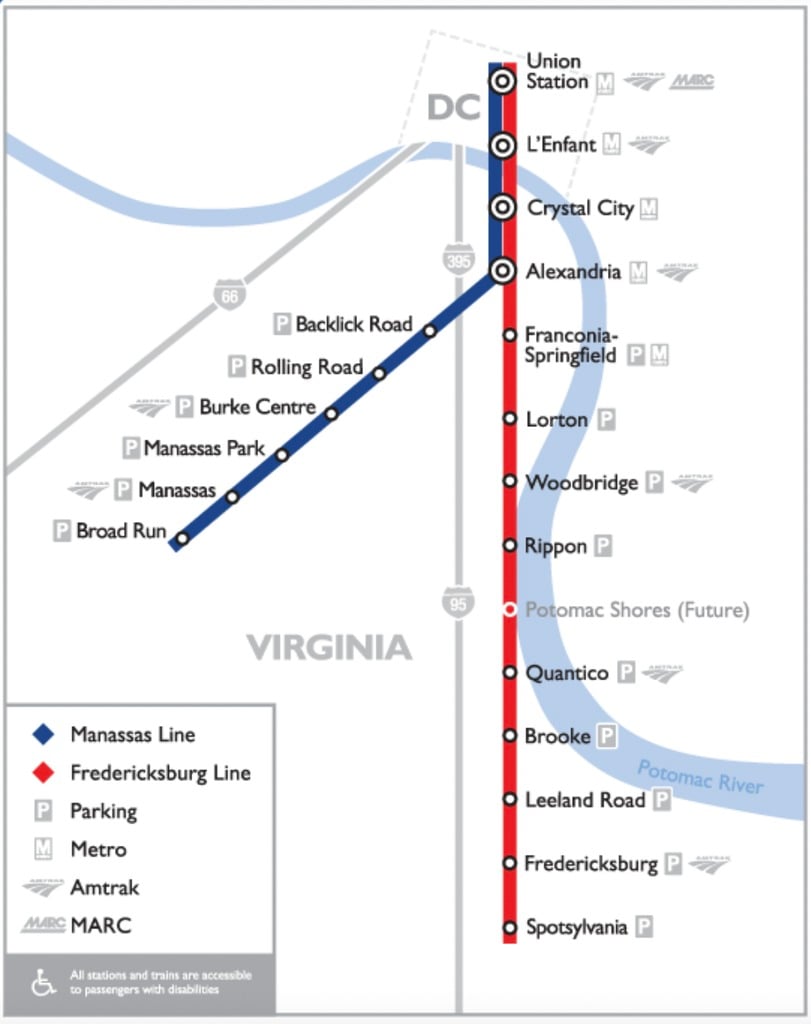
If you’re expecting to use the VRE to head to work, you’ll be going down from the Crystal City Station. This is the closest one to the Pentagon, just a mile to the south.
Now, remember what we said about you only having three commuting options in most cases? Well, it’s either the Metro that’s accessible to your, or the VRE. The Metro system only runs through the northeast portion of Northern Virginia, while the VRE is on the southern end of the region. So if you live in Stafford County or Prince William County, the VRE is for you. Otherwise, you’re likely going to use the Metro in most areas.
Mass Transportation Benefit Program
The Mass Transportation Benefit Program is open to federal employees and military service members opting for public transportation in their daily commutes. Commuting expenses receive subsidies, as authorized by law and regulation, aiming to reduce pollution, alleviate traffic congestion, preserve the environment, and promote diverse transportation options.
This program allocates transportation subsidies to registered WMATA SmarTrip cards, covering certified commuting costs between home and work, up to the federal maximum statutory limit. These benefits are applicable to various transportation providers, including Metrorail, Metrobus, Virginia Railway Express (VRE), Maryland Area Regional Commuter Rail (MARC), Vanpools, PRTC, and many others.
2024 Basic Allowance for Housing (BAH) Rates for The Pentagon
Now, before you narrow your choices among the regions, let’s talk about housing expenses first because Northern Virginia’s real estate market is some of the most expensive in the county. And the closer you want to be to the city, the higher the price tags are.
First, let’s take a look at your BAH. The 2024 VA BAH rates have increased by 8.5 percent from 2023, and they are as follows:
Enlisted Rates
| With Dependents | Without Dependents | |
| E1 | $2,811.00 | $2,169.00 |
| E2 | $2,811.00 | $2,169.00 |
| E3 | $2,811.00 | $2,169.00 |
| E4 | $2,811.00 | $2,169.00 |
| E5 | $2,880.00 | $2,538.00 |
| E6 | $3,360.00 | $2,739.00 |
| E7 | $3,525.00 | $2,808.00 |
| E8 | $3,705.00 | $2,98200 |
| E9 | $3,882.00 | $3,120.00 |
Warrant Officer Rates
| With Dependents | Without Dependents | |
| W1 | $3,381.00 | $2,799.00 |
| W2 | $3,600.00 | $2,979.00 |
| W3 | $3,819.00 | $3,138.00 |
| W4 | $3,909.00 | $3,399.00 |
| W5 | $4,020.00 | $3,3564.00 |
Officer Rates
| With Dependents | Without Dependents | |
| O1E | $3,558.00 | $2,877.00 |
| O2E | $3,786.00 | $3,090.00 |
| O3E | $3,924.00 | $3,354.00 |
| O1 | $2,943.00 | $2,736.00 |
| O2 | $3,354.00 | $2,859.00 |
| O3 | $3,813.00 | $3,186.00 |
| O4 | $4,056.00 | $3,534.00 |
| O5 | $4,224.00 | $3,636.00 |
| O6 | $4,260.00 | $3,798.00 |
| O7 | $4,293.00 | $3,864.00 |
Other than your BAH, we also have to consider your VA entitlement for your VA loan. Now, because the Northern Virginia housing market is crazy, you’ll be able to borrow more in this region. Let’s talk about this a bit more in-depth in the next section.
VA Entitlement
For most places in the continental United States, the 2024 conforming loan limit is $766,550, even in Virginia. But for the northern region of the state, the limit can go as high as $1,149,825. According to Veterans United, here are some areas in Northern Virginia with the maximum VA loan limit:
| County | Loan Limit |
| Alexandria City | $1,149,825 |
| Arlington County | $1,149,825 |
| Clarke County | $1,149,825 |
| Culpeper County | $1,149,825 |
| Fairfax County | $1,149,825 |
| Fairfax City | $1,149,825 |
| Falls Church City | $1,149,825 |
| Fauquier County | $1,149,825 |
| Fredericksburg City | $1,149,825 |
| Loudoun County | $1,149,825 |
| Madison County | $1,149,825 |
| Manassas City | $1,149,825 |
| Manassas Park City | $1,149,825 |
| Prince William County | $1,149,825 |
| Rappahannock County | $1,149,825 |
| Spotsylvania County | $1,149,825 |
| Stafford County | $1,149,825 |
| Warren County | $1,149,825 |
| All other areas | $766,550 |
Take note, the “limits” above or your “VA entitlement” are not the amount you can borrow, but the amount that the government guarantees.
Now that this is out of the way, we’ll tackle the other considerations of your VA loan limit. According to the U.S. Department of Veterans Affairs, loan limits don’t apply to every veteran.
Those with a full entitlement don’t have limits for loans over $144,000. With this, you don’t need to shell out a downpayment and if you default on a loan that’s over $144,000, they’ll pay the lender up to 25% of the loan amount.
You have a full entitlement if you meet any one of these requirements:
- You’ve never used your home loan benefit, or
- You’ve paid a previous VA loan in full and sold the property (therefore your full entitlement is restored), or
- You’ve used your home loan benefit but had a foreclosure or compromise claim (a.k.a. A short sale) that you’ve repaid in full
If you don’t fall under a full entitlement, you have what’s called a remaining entitlement if any of these apply to you:
- You have an active VA loan you’re still paying back, or
- You paid a previous VA loan in full and still own the home, or
- You refinanced your VA loan into a non-VA loan and still own the home, or
- You had a compromise claim (or short sale) on a previous VA loan and didn’t repay us in full, or
- You had a deed in lieu of foreclosure on a previous VA loan (this means you transferred your home’s title to the bank that holds your mortgage to avoid foreclosure), or
- You had a foreclosure on a previous VA loan and didn’t repay us in full
So if you have a remaining entitlement, you have a VA loan limit based on the table above.
Factors to Consider When Choosing Where to Live
Taking all that we’ve talked about so far, it’s time for us to pick the best place for you to move in. For most people living in or near a metro, there are three important factors to consider when house hunting – commute times, cost of living and price of the home, and property types. And so, we’ll be considering those as we talk about the regions of Northern Virginia.
Finances
When moving to a new place for work, naturally, you’d want to be as close to your workplace as possible. So when talking about the cost of living, we’ll start with regions closest to the Pentagon first. All the values we’ll be mentioning below are from the Economic Policy Institute.
| Area | Monthly Housing Cost | Total Monthy Expenditure (including housing costs) |
| Arlington County | $2,068 | $9,885 |
| Alexandria | $1,834 | $9,055 |
| Fairfax County | $1,975 | $9,797 |
| Loudoun County | $1,963 | $9,861 |
| Prince William County | $1,798 | $9,221 |
| Stafford County | $1,623 | $8,830 |
While Arlington County may be the best bet for its proximity to the Pentagon, it’s also the most expensive region to live in for housing costs. If you want to be close to your workplace with a smaller budget, Alexandria, which is just next door, is a better option.
If you’re looking at Stafford County right now because it’s the most affordable of the bunch, keep in mind that living there will be a long commute to the Pentagon. But like I mentioned earlier in this article, proximity to your workplace isn’t always better. Sometimes those who live further away from their workplace have shorter times due to their commute options, and we’ll get to that next.
Commute
I know we’ve talked about commuting earlier in this section, but that one focused on how to get to the Pentagon. This time, we’ll look into each county– you’ll know how you’re gonna head in and out of each and other relevant details.
Driving
Arlington has the shortest average commute distance at 9.6 miles, which isn’t surprising since it’s an employment hub, it’s close to other popular areas in Northern Virginia, and is just beside the nation’s capital. Meanwhile, Loudoun County has the longest average commute distance at 19.65 miles. To put things into perspective, the Northern Virginia average commute distance is 15.45 miles.
In the morning rush, Fairfax County experiences the highest percentage of its roads either near or over capacity. This places it slightly ahead of Alexandria, which, surprisingly, has a lower proportion of lane-miles near capacity
Now, let’s focus on driving time for a bit. We used a tool called INRIX DriveTime to determine which places you should live in if you wanna drive to the Pentagon within a certain timeframe.
The following criteria were used:
- You’re driving to the Pentagon on a Tuesday
- You want to reach the Pentagon by 8:30 AM
- You want to get to the Pentagon within 15 minutes, 30 minutes, 45 minutes, or 60 minutes
Here is a rough idea of the areas you’d want to live in to reach The Pentagon within 15 minutes or so. Look into areas that are within the orange lines.

This region contains most of Arlington, especially to the east, northern Alexandria City, and further southwest to Lincolnia in Fairfax County. From Lincolnia, I-395 would be really useful because it’s a straight shot to The Pentagon.
Within the yellow lines are the areas that are within a 30-minute drive time to reach the Pentagon by 8:30 AM on a Tuesday.

This consists of Arlington County, Alexandria City, And Some Parts of Fairfax County, particularly those to the north, the central towns, and some to the east. Those that are a part of Fairfax County include Falls Church, West Falls Church, McLean, Vienna, and Wolf Trap to the north; Springfield and Franconia to the east; Lorton to the southeast; and Fairfax City.
The areas colored in green are those you can live in to be a 45-minute drive away to the Pentagon.

Now, that still includes Arlington County, Alexandria City, and Fairfax County, stretching as far as Reston, Herndon, Chantilly, and Great Falls, which borders Loudoun County. This region also includes parts of Loudoun County, such as Dulles, Sterling, Potomac Falls, and parts of Ashburn. Parts of Prince William County are also within this 45-minute drive, such as Woodbridge and Marumsco in the southeast; Minnieville and Montclair in the southwest; and Dumfries to the south. Other cities that you can also look into include Fairfax and Manassas Park.
Finally, if you don’t mind driving an hour to reach the Pentagon, here are the areas to look into.

It goes without saying that the places we’ve already talked about are included here – Arlington County, Alexandria City, and Fairfax County are all within an hour away. Parts of the three remaining counties are also within this criteria though. In Loudoun County, it stretches as far as Leesburg, Brambleton, and Ashburn. In Prince William County, it goes as far as Gainesville. And in Stafford County, you can consider Garrisonville, Aquia Harbour, parts of Stafford Courthouse, and Ramoth, the southernmost point of these limits.
Public Transportation
If you don’t want to get behind the wheel, or if you don’t mind driving for only a part of your commute, you already know your options because we talked about the Metro, VRE, and bus services in Northern Virginia above. All it boils down to is preference.
As mentioned earlier, Arlington has the highest number of commuters using public transportation, especially the metro, with Alexandria following behind. Though with such close proximity to the Pentagon, you can also go on a 15-minute drive to work from either one and just worry about parking or just take the bus. Either of these options is great since both Arlington and Alexandria are well-connected with public transit.
Fairfax County is a great in-between, depending on where you live. Northwest Fairfax County is particularly great for public transportation because it has several metro stations along the Orange and Silver lines, which connect to the Blue Line at the Rosslyn Station, so getting to the Pentagon Station just takes one change of train. You could also live somewhere near the Franconia-Springfield Station in Fairfax County, which is on the Blue Line – no switching of stations needed.
The thing about Fairfax County though is that for most of the region, you still need to drive to the metro station, park your car there or somewhere nearby, and then take the train. So at some point in your commute, you still have to drive. Unless you take one of the Fairfax Connector buses, but then you’d still have to get to a bus stop too. So, really consider where your home’s location is if you want to live a full life in the county without getting behind the wheel.
In Loudoun County, you’ve got fewer metro stations and fewer bus routes, especially if you’re in western Loudoun County – those areas beyond Leesburg and Aldie. The furthest metro line in Loudoun is the Ashburn Station on the Silver Line. So, again, you need to either drive or take the bus to get to this metro station.
Prince William County and Stafford County are the southernmost counties in Northern Virginia, which are around 35 to 40 miles away from the Pentagon. They’re not the furthest one from the Pentagon since Loudoun County is 44 to 51 miles away. But what makes it easier to live in Loudoun is that it has multiple roads going into Arlington, D.C., and the Pentagon. Prince William and Stafford only have two roads you can hop onto to get to the city – I-95 and US Route 1, which can become quite congested since everyone is on the same road to go north.
That’s why the OmniRide’s railway and bus services are extremely useful. Prince William County has both OmniRide’s VRE and bus services, while Stafford County only has the VRE rail services.
Property Types
Some of you may not be all that concerned about the commute time because getting the property type you want is more important. Northern Virginia has pretty much every type you can think of – single-family homes, townhomes, condos, even estate-type homes, farmettes, and mansions. Depending on the location though, there’s always going to be one or two that are more prevalent.
Arlington County
In Arlington, you’ll mostly find single-family homes with a mix of townhomes and condos. Last 2023, Arlington gave its approval to a new plan for more high-density living areas. This makes it easier to build townhouses, duplexes, and small buildings containing up to four, and even six, residential units on lots that were previously designated exclusively for single-family detached housing. The median sale price for homes in Arlington County is around $720,000.
Alexandria
Alexandria City is a mix of several choices, from single-family homes of various styles to more modern condos, beautiful row houses to charming waterfront homes. While colonial homes, remnants of the city’s rich history, are most popular here, especially in North Ridge, Rosemont, and the West End, Alexandria has a healthy mix of new construction homes too. And if you’re looking for townhomes, Delray is one of the most popular places to start looking. The median sales price for Alexandria is $575,000.
Fairfax County
Single-family homes, the most expensive property type, are the most common in Fairfax County. This is one of the main contributors to the high median sales price in the region, which is $658,500 as of the time of writing. Some areas, such as Tysons Corner, are dense with condos and other high-density living properties. Towns in eastern and southern Fairfax County tend to be more affordable too, like Springfield and Clifton.
Loudoun County
Loudoun County is predominantly single-family homes, especially on the western end, where you won’t find any other property type. Eastern Loudoun County has more variety and choices: Flats in Sterling; estate-type homes and townhomes in Leesburg; courtyard homes and penthouse-style flats in Brambleton; luxury and garage condos, and villas in Aldie; and 55+ communities around Eastern Loudoun. This county is rapidly growing – most homes here are built after 2000 and there is a great stock of new construction homes here, which means easier maintenance with modern plumbing and appliances, among other benefits. Homes in Loudoun County have a median sale price of $720,000.
Prince William County
Prince William County is home to an incredible mix of homes – something for every taste and style. It features townhomes, condos, and single-family homes of various styles, from the classic rancher to elegant waterfront homes. Beyond the property type, there’s a great diversity of developments here too – active adult communities, golf course communities, and even urban communities boasting several conveniences, such as being close to stores, restaurants, and VRE stations. Prince William County is one of the more affordable regions, with a median sales price of $511,000, but it’s slowly catching up to its northern neighbors.
Stafford County
In Stafford County, there’s a good stock of both single-family homes and townhomes, with relatively fewer condo units. With a mix of starter homes, apartments, cluster homes, and gated communities like Aquia Harbour, there’s plenty to choose from here. Some properties here have beautiful waterfront locations or are golf communities, it’s easy to connect with neighbors or peers here. In this county, it’s typical to come across spacious lots, three to four-bedroom homes and even four-story townhomes. The median sales price for Stafford County homes is $499,925.
Where Should You Live?
Now that you have an overview of the different counties, the finances, the commute around the region, and more, it’s time to decide where to secure a home. It’s a tough decision, given how big Northern Virginia is, so we’ve narrowed it down for you considering all the factors mentioned beforehand.
Arlington County and Alexandria City may be the obvious choices here as they offer the shortest commute to the Pentagon. However, properties in both areas are quite high.
In Arlington, the average home value of homes that were sold last year is $1,180,713. But you can still find a semi-detached home with 3 beds and 1,044 square feet for $300k or a detached home with 2 beds and 1,026 square feet of living space in the county.
In Alexandria, the average price of homes sold last year was $825,853. One of the most affordable townhomes sold for $285k with 2 beds and 1,055 square feet of space. Meanwhile, the lowest sold price for a detached home we could find was $460k, and that had 4 beds and 1,092 square feet.
Even with the more affordable options in both counties, you may still find them too pricey for what you pay for. That’s why we recommend you start your house hunt outside them, that way you get more value for your money.
Fairfax County
Because of its diverse housing options, its better prices compared to Arlington and Alexandria (depending on the location), and its great housing stock, Fairfax County is the best county to look for homes.
Fairfax County is headquartered by several Fortune 500 companies and is seen as a major employment hub, especially in the Tysons Corner area. And yet, not too far are areas filled with parks, nature preserves, and more quaint, local businesses like Great Falls.
This county is as diverse as it gets. Some areas are highly urbanized, with a great mix of detached homes, townhomes, and condos. Others are more suburban, filled with single-family homes, and have a lot of green spaces. No matter where you are in the county, you’re never too far away from urban conveniences, metro stations, and major roads to the Pentagon.
Because towns and communities within Fairfax County differ from one another, we’d recommend you to know them individually, as opposed to getting a general overview of the county itself.
Kingstowne, Franconia
We’ve covered Kingstowne a few times on our YouTube channel already, and we may be biased because we live here, but it really is one of the best places to live in Northern Virginia. Located in southeastern Fairfax County, it’s just 9 to 12 miles south of the Pentagon. Being close to the mixing bowl – where I-95, I-395, and I-495 connect – has its pros and cons, but this affords you easy commute options. You have two metro stations nearby: Franconia-Springfield and Van Dorn, 2 on-ramps to the interstate, and Fairfax Connector bus services throughout the day.
Because Kingstowne is a planned community, you have urban conveniences at your fingertips here. Community amenities by the HOA include outdoor swimming pools, fitness and community centers, tennis courts, tot lots, and 12 miles of walking trails.
A convenient lifestyle is the biggest draw of Kingstowne: big-named and international grocery stores are within the community or a few minutes drive, restaurants from Italian to American fare are dotted throughout the area, and you have quick access to golf courses and a driving range from here. Plus, there’s a movie theater within Kingstowne too. There’s a strong community vibe here in Kingstowne, and the HOA does a great job at bringing everyone together through events.
Considering all of these, it’s no wonder we have a lot of military neighbors here, despite the home prices here being on the higher end. Kingstowne has a mix of properties, offering single-family homes and condos, though townhomes are the most popular choice. The home prices here range from $425,000 to over $1,000,000, averaging around $688,000.
Single-family homes, are, of course, the priciest, often creeping toward the $1M dollar mark or over it. You can find a detached home on the lower end around the $500s, although it’s only got one level with 3 beds and it doesn’t have a garage. This is why most people go for Kingstowne’s townhomes – you can get one within the upper $600s with 3 levels, 3 beds, close to 2,000 square feet, and a garage included.
Broyhill Crest, Annandale
Despite being within the beltway, Annandale is a break from the highly urbanized areas that are common in the region. Here, parks and green spaces are plenty, and tree-lined streets are everywhere, even if you head into the commercial hubs of Annandale.
Food is a big attraction in the community. With a high migrant population, Annandale’s food scene features flavors and cuisine from all over the world and it’s especially known to be the home best Korean food in the region, which is why Annandale is the unofficial “Koreatown” of Northern Virginia.
Annandale’s housing market consists mostly of single-family homes and townhomes, from centuries-old properties to new construction. Within the area is an established, single-family home community called Broyhill Crest, a community with urban convenience and a rural atmosphere.
Broyhill Crest is located northeast of the intersection of I-495 and Little River Turnpike and northwest of the intersection of Sleepy Hollow Road and Columbia Turnpike. It’s a 10-mile drive to the Pentagon from this community, and you have a few routes to choose from, some of which don’t include hopping on the interstates. And if you prefer commuting, there are three metro stations nearby: Van Dorn Street, Dunn Loring-Merrifield, and East Falls Church.
According to residents, the main draws of this neighborhood are its location inside the Beltway, active community pool, spacious lot sizes, abundance of mature trees, and diverse population.
Broyhill Crest offers easy access to great shopping, grocery stores, and retail, and is close to the urban amenities of Northern Virginia; you’re just a short drive away from Mosaic District, downtown Falls Church, and Seven Corners, other than downtown Annandale, which is just 3 miles away from the neighborhood.
In line with the character of Annandale, this neighborhood has easy access to six parts within and on the outskirts of the community, offering sports fields, tennis and basketball courts, playgrounds, trails, grilling areas, and more.
Broyhill Crest has an active community association that sponsors events throughout the year, bringing the community together, especially at the Broyhill Crest Recreation Club. Residents here take pride in where they live, with programs such as the Len Wood Neighborhood Watch, in which residents patrol around the community to watch out for and report any suspicious or unusual activity.
Because of all this, Broyhill Crest is a popular sought-after neighborhood in Annandale. As mentioned, you’ll only find single-family homes here, most of which are older and were built in the 1950s, when construction began, so you’ll see a lot of colonials and ramblers here. Homes typically have a little over 1,000 to over 2,000 square feet of living space on over 0.20-acre lots and usually have at least three bedrooms.
As for the finances, Broyhill Crest homes range between $525,000 to $835,000, with an average home price of $697,000. And because there’s no HOA here, you have a little less to worry about when it comes to your monthly payments.
North Springfield, Springfield
South of Annandale is another neighborhood that boasts single-family homes on large lots, North Springfield. Half of this quiet residential neighborhood is located inside the Beltway, at the intersection of I-495 and Braddock Road, with I-395 not too far away. Access to two major roads means a relatively short drive to the Pentagon, just 10 to 12 miles away from the neighborhood. Public transportation is also accessible from here, with Franconia-Springfield Metro Station and Braddock Road VRE Station just a few minutes away.
North Springfield has a suburban feel, without taking away any easy access to amenities. Nearby retail, grocery, and restaurants are just along Braddock Road, the northern border of the community. Just outside the community is Springfield Town Center, while Mosaic District and Tysons Corner Center are just a straight drive north along I-495 for more shopping, dining, and entertainment options.
Most homes in North Springfield were built in the 1950s and 1960s, so you’ll see a lot of colonials, ramblers, and ranches here. These homes are typically on lots that are a quarter to a third of an acre and usually have over 1,000 to a little over 2,300 square feet in living space, though newer homes are over 5,000 square feet.
North Springfield homes range from $450,000 to $950,000, with the average home price at $628,000. And like Broyhill Crest, you don’t have to worry about HOA fees here.
Pleasant Valley, Chantilly
Moving away from the Beltway, we’ll be talking about neighborhoods in the western part of Fairfax County next, starting with Pleasant Valley in Chantilly. Located just a mile south of Route 50, and 3 miles away from Route 28, this neighborhood has easy access to two of the major roads in western Northern Virginia.
It’s a big pro to be close to Route 50 for two reasons. One is that a lot of retail and businesses are located along this road. Another is that you’re gonna be using this road a lot when getting in and out of Chantilly; Route 50 offers direct access to I-66, and you’re gonna drive along it to reach the Ashburn Metro Station (10 miles away) or Vienna Metro Station (13 miles away) if you’re taking public transportation.
Within Pleasant Valley is a community pool, and just outside it is the Pleasant Valley Golf Club. Because this is a residential neighborhood, urban amenities aren’t necessarily within walking distance, but they’re just a short drive away. Downtown Chantilly, which has all your grocery stores, retail, and restaurants, is beside Pleasant Valley, only separated by Cub Run Stream Valley Park. You have a park with miles of trails and water views, perfect for hiking, fishing, and birding, right in the neighborhood’s backyard.
Most homes here date back to the 1980s and the architecture reflects that: you’ll see tons of colonials, split levels, and split foyers here, with a few contemporary-style homes. These homes typically offer 1,200 to over 3,000 square feet of living space on a quarter to a third of an acre lots.
Pleasant Valley homes are priced anywhere from $485,000 to $759,000, with the average home price hovering around $649,000. There’s also no HOA here, so you don’t have to worry about monthly association fees.
Kingston Chase, Herndon
Also in western Fairfax County, bordering Loudoun County, is the town of Herndon. Nestled among the rolling hills and located along the Dulles Technology Corridor, Herndon’s urban conveniences, suburban charm, and small-town feel make it a desirable place to live for many. Here, you get to enjoy a smaller pace of life while still being close to the highly urbanized area of D.C. and Northern Virginia, offering you the best of both worlds.
The town boasts historical sites in its Historic District, is home to over ten neighborhood parks that feature sports fields, has a wide variety of cuisines – from sushi bars to Irish pubs – along with many mom-and-pop restaurants, and has many shopping centers and smaller shops around. Hernon is an excellent in-between of everything Fairfax County has to offer.
Kingston Chase is one of the most sought-after neighborhoods in Herndon. This community of over 500 single-family homes along tree-lined streets boasts a convenient location. It’s in the middle of four major roads: Route 7 to the north, Route 28 to the west, Route 267 to the south, and Route 286 to the east, making it easy to get in and out of the community.
While this is a quiet residential neighborhood, urban amenities are just a short drive away. Sterling Park Shopping Mall and the historic town of Herdon are both 2 miles away, Reston Town Center is 4 miles away, and Dulles Town Center is 5 miles away from Kingston Chase.
All these are just a bonus because the main draw of this community is right within its borders. Kingston Chase has a community swimming pool, a clubhouse tennis courts, and a playground at the Kingston Chase Recreational Facilities, the heart of the neighborhood. This community is known for its active social life: the Kingston Chase Home Owners Association offers numerous opportunities for you to mingle with your neighbors through events throughout the year and regular get-togethers.
Kingston Chase homes are mostly built between the 1970s and 1980s so you’ll find a lot of colonial-style homes here with some ranches, ramblers, and split levels. These homes are spacious, ranging from 1,400 to close to 4,000 square feet in living space on more or less 0.20-acre lots.
These homes range in price from $525,000 to $742,000, with an average home price of $646,000. Keep in mind that Kingston Chase has an HOA, so you have to factor in association dues in your monthly expenses.
Hiddenbrook, Herndon
Just north of Kingston Chase is the Hiddenbrook neighborhood. Because they’re just beside each other, this community also offers easy access to urban amenities – it’s near Sterling Park Shopping Mall, the Town of Herndon, and the Dulles and Reston town centers – and quick access to major routes that surround it.
Hiddenbrook is also a single-family home community of over 300 homes, a majority of which were built in the early 1970s. There’s more variety in house styles here as there’s a good mix of colonials, split levels, ramblers, and contemporaries in this neighborhood.
Because Hiddenbrook has an HOA, you get to enjoy community amenities here. Hiddenbrook has a community swimming pool, offers tennis memberships, and has a clubhouse.
Homes here fall between 1,092 to a little 2,400 square feet in size on 0.20 acre lots. These are slightly smaller than homes in neighboring Kingston Chase, which is why you’ll find more affordable options here. The price range for Hiddenbrook homes is between $430,000 to $685,000, with an average home price of $613,000.
Loudoun County
With 516 square miles of land, Loudoun County is the largest county in the region based on land size. Here is where you’ll find a stark difference between urban/suburban and rural Northern Virginia – the eastern part of the county (Ashburn, Sterling, and Leesburg) is considered the urban half, while the western part (Purcellville, Lovettsville, and Middleburg) are is the more rural side.
Ashburn and Sterling in the eastern section are part of the Dulles Technology Corridor, and as you can expect, they’re the busier parts of the county with a wealth of shopping, dining, and entertainment options. You’ll find a great variety of homes in this area, with smaller single-family homes, townhomes, and condos.
Over in the western half is where you’ll mostly find single-family homes, estate-type homes, and farmettes. It’s the best place to explore vineyards and go wine tasting, as Loudoun is known as “DC’s Wine County”, though you’ll find a few wineries in the eastern half as well.
Loudoun County is popular among those looking for new construction homes because it has a ton of them. A lot of neighborhoods here were built after the 2000s, and builders are still creating new communities here to this day.
Because western Loudoun County is too far from the Pentagon – it would take more than an hour’s drive to reach the base from there – we’ll be focusing on the eastern section instead.
Forest Ridge, Sterling
In Loudoun County, location matters, and the closer you are to Fairfax County, the better. This way, you have access to more major roads and the metro’s Silver Line, because areas after Ashburn don’t have any metro stations. For this reason, we suggest looking for homes within the Sterling area, which is right at the border with Fairfax County. The Forest Ridge neighborhood here is located immediately to the west of two neighborhoods we’ve previously discussed: Kingston Chase and Hiddenbrook.
Forest Ridge is also located in a residential area, far from busy streets and establishments, so you have a peaceful place to call home, but it’s never too far from urban conveniences.
Just outside the neighborhood is Sterling Park Shopping Mall and a few other retail stores. Downtown Sterling is a short, 2.3 miles away, where you have endless food options, many museums, numerous live music venues, a network of hiking trails, and several parks, each with their own amenities. Dulles Town Center is 4 to 5 miles away. Plus, several parks and golf courses are within 1 to 2 miles away from Forest Ridge.
Forest Ridge is also bounded by four major roads: Route 7 to the north, Route 28 to the west, Route 267 to the south, and Route 286 to the east – the same roads that border Hiddenbrook and Kingston Chase.
The biggest draw to Forest Ridge is its natural beauty. It’s abundant in lush, mature trees that the developer sought to preserve. Some oak trees have stood within the neighborhood for hundreds of years.
This single-family home community features homes that were mostly built in the late 1970s to the late 1980s, and there are a lot of colonial-style homes here with a lot of character, with some other traditional styles like split foyers.
Forest Ridge homes are generally more spacious than those in neighboring Hiddenbrook. These homes range in size from 1,661 to 3,178 square feet on a quarter to a third of an acre lots.
Because of this, home prices in Forest Ridge are comparable to Kingston Chase – you’ll find homes in the former between $550,000 to $729,000, with an average home value of $650,000. Keep in mind that Forest Ridge has an HOA, so you have to include association dues in your monthly expenses.
Sugarland Run, Sterling
Located just off Route 7 to the north, getting in and out of the Sugarland Run neighborhood is a bit more straightforward compared to Forest Ridge. Despite being just beside a major road, this community’s network of through roads and cul-de-sacs offer a more quiet and private setting from the main street.
Amenities never too far away too as around the neighborhood are exciting spots for outdoor recreation and urban conveniences too.
To the north of Sugarland Run are parks, such as Algonkian Regional Park, which has a golf course, sports fields, and more; and Trump National Golf Club, one of the top golf clubs in Northern Virginia. A little further noth is the Potomac River, so you’re close to miles of trails, river views, and water sports from the neighborhood.
Southwest of Sugarland Run – across Route 7 – is Dulles Town Center, Potomac Run Plaza, and Dulles Town Crossing with a wealth of entertainment, shopping, and dining options. And just west of the neighborhood Regal Center with several grocery stores, food options, and services, all of which are accessible from the community via Palisade Parkway – no need to hop on a busy road.
Sugarland Run is a community of 2,600 detached homes and townhomes, built around the 1970s and 1980s, that stray from the typical colonial-style homes found in Northern Virginia. This community has a southwestern architectural influence, boasting California Contemporary-style homes. There are also some colonial and traditional-style homes here that feature open layouts and flowing floorplans.
This isn’t the only impressive thing about the neighborhod. Sugarland Run boasts several great amenities so you don’t have to stray too far from home to have a good time.
Within its boundaries is a Community Center, the heart of Sugarland Run, where events like movie nights, holiday parties, and concerts, are held throughout the year. The neighborhood also boasts the largest private outdoor pool in the county at 50 meters by 25 yards, with a diving well, plus a separate wading pool for the kids. Speaking of kids, there are 19 tot lots dotted around the neighborhood – plenty of space for the young ones to have fun. Other than that, 16 miles of walking paths run throughout the neighborhood, leading you to natural wooded areas.
While the Potomac River is not too far away, you don’t have to leave home for water activities. Within Sugarland Run is Willow Lake, offering fishing, model boats, and non-motorized boating throughout the year.
Sugarland Run homes range anywhere from 1,184 to over 2,600 square feet, which is pretty spacious for a small family already. If you don’t like maintaining yards, townhomes here are perfect because they sit on 0.04 to 0.1-acre lots. But if a yard space is crucial to you, detached homes here have a lot space of more or less 0.2 acres to a little over a quarter acre.
Prince William County
Prince William County is another large county, running diagonally along the border with Fairfax County, with its northernmost section just under Aldie in Loudoun County. Compared to its northern neighbords, Prince William County is more suburban, especially in areas closer to Fairfax County. There’s a section of the county called the “Rural Crescent”, the rural section of the county that serves as a growth boundary to limit the urban spread in Prince William within the suburbs.
Because of this, Prince William County is known for its natural beauty and abundant outdoor recreation, resulting in a rich quality of life. While you’re around a 45 to 60-minute drive away from the Pentagon from here, you gain access to tons of open spaces, indoor and outdoor facilities, wineries, breweries, historical and cultural attractions, and a wide variety of shopping and dining at an affordable price compared to the rest of Northern Virginia.
You also get more housing options here in gated communities, mixed-use developments, rural areas, waterfront communities, and even golf course communities.
Because Prince William County covers a lot of land, we’ve narrowed down the list below to neighborhoods that are realistically within an hour’s drive away from the Pentagon. These communities are part of eastern Prince William County, south of the Pentagon, and just along I-95. We’ve excluded neighborhoods in the western part of the county because you have to go through side streets and smaller roads to get to an interstate – there’s a lot of driving just to get to the base from there.
Lake Ridge, Woodbridge
Developed in the 1960s as a planned community, Lake Ridge is a big community of over 7,000 homes that are now part of the Woodbridge area. This community has 4,700 acres of common ground, with 1,200 acres being maintained by the Lake Ridge Association.
What makes Lake Ridge highly desirable is its natural beauty and connection to nature. It boasts plenty of trees and greenery dotted throughout the community, an extensive network of parks and trails, and the neighborhood just borders Occoquan Reservoir to the north, which means water sports are easily accessible here.
Within the community are numerous amenities for outdoor recreation. You have five swimming pools, a spray ground, a boat ramp, sports fields, playgrounds, fitness stations, and tennis, pickleball, basketball, volleyball, and multi-use courts.
The community is also home to two shopping centers: Lake Ridge Commons and Ridgeview Plaza. With that, all your shopping, restaurants, and essentials are readily available for you in Lake Ridge.
Lake Ridge offers an enviable lifestyle that blends convenience with tranquility and nature, you never have to leave the community for most things. Because of this, this neighborhood is still a great choice despite being 22 to 25 miles away from the Pentagon.
Lake Ridge is just a few minutes away from I-95 – a straightforward drive north to the base. And while there’s no metro station here, there’s the Woodbridge VRE station on the Fredericksburg Line, just 4 miles away from the community. It may be a better option to take the VRE to the Crystal City station if you want to avoid traffic or getting behind the wheel.
With diverse housing options, Lake Ridge offers single-family homes, townhomes, condos, and even apartment complexes, ranging from $299,000 to $999,000. These homes are dated between the 1960s to the late 1990s, so there’s a good mix of contemporary, split-level, colonial, and ranch-style homes here.
Although these homes are around 1,000 to over 4,000 square feet, many of them on the lower end of this range sit on smaller lots. Smaller townhomes typically sit on at 0.03 acres, while larger ones are on 0.09-acre lots. Meanwhile, smaller detached homes have at least a 0.12-acre yard space, while the larger ones sit on half-an-acre lots, some even close to an acre.
Dale City, Woodbridge
Just south of Lake Ridge is Dale City, which was developed as a planned community sometime between the 1960s and 1970s. Depending on where you are in Dale City, you have quick access to I-95 as it’s just off the interstate. Otherwise, it’s just a quick drive along Dale Boulevard to get to I-95.
If you don’t want to drive all the way to the Pentagon from here, the Rippon VRE Station is just 5 miles west of Dale City, across I-95 and Route 1. Another option would be to catch an OmniLink Bus at near the intersection Gideon Road and Dale Boulevard, at the eastern end of the community. This bus service will drop you off directly at the Pentagon, so it’s a pretty straightforward way to reach the base.
Now, we’ve mentioned Dale Boulevard a few times already, and that’s because it’s an important road in this community – pretty much all your retail, services, groceries, entertainment, dining options are along this road. Dale City is big on famly-owned restaurants, many of which have been serving the community for a long time.
There’s a lot going on within Dale City – there’s an ice skating rink, a trampoline park, a water park, and numerous parks dotted within its boundaries. And if you’re into farmers markets, the Dale City Farmers Market is one of the biggest and best in the region. It has around 50 vendors during the spring, summer, and fall season, with over 20 vendors during the winter market, running every Sunday.
Dale City homes vary drastically in age, ranging from the early 1960s to the early 2000s, with a very few homes built just last year, in 2023. Many of them are older though, so you’ll see a lot of colonial, split foyer, cape cod, and rambler style homes in the community.
Because Dale City features just about every type of property, from single-family homes to some condos, there is a wide price range for homes here, starting from $189,000 to $925,000. On the lower end of this range are townhomes and some single-family homes which have around 1,000 square feet of living space. On the higher end of that range are detached homes with a square footage of over 5,000 square feet.
Townhomes typically sit on 0.03 to 0.09-acre lots, while detached homes have a yard size of 0.1 to over 0.70 acres. Single-family homes here in the $500s often have quarter acre lots, a great deal if you like lots of space.
Eagles Pointe, Woodbridge
A little further south of Dale City is the neighborhood of Eagle Ridge. This community is unique, as it sits between I-95 and Route 1, two of the only roads that you can take to drive all the way from the Pentagon, which is 26 to 29 miles away. If you don’t want to drive that long to get to the base, you can catch a train at the Rippon VRE Station, just 5 miles away from the neighborhood.
Now, this neighborhood is not for everyone. It doesn’t have the wealth of recreation, entertainment, and retail options within the community like nearby Lake Ridge, although it’s just a few minutes drive away to Stonebridge at Potomac Town Center and Potomac Mills Mall. Nor does it have the urban amenities, the numerous route options to the base, and the metro station access of the neighborhoods in Fairfax and Loudoun counties.
What this single-family home community has to offer is more home living space for roughly the same price of properties in the neighborhoods we’ve already mentioned above. Also, properties in Eagles Point were built between the 2000s to the early 2010s, which means more modern home amenities compared to Lake Ridge.
Eagles Pointe homes range from 2,364 to over 6,000 square feet – a big jump from the living area size that you can find in Fairfax County. Although you get more square footage here, the lot sizes in Eagles Pointe are often on the smaller side, like those in Lake Ridge. A lot of homes here are on 0.1-acre lands, with some on a quarter acre and above. These homes go for as low as $575,000 to as high as a little over $1M, with the average home price sitting at $675,000.
Port Potomac, Woodbridge
Port Potomac is Eagles Pointe’s eastern neighbor, and therefore, both share a ton of similarities. Port Potomac is just off Route 1, but has quick access to I-95 via Cardinal Drive just outside of the community. And again, living in this community doesn’t mean you have to deal with the traffic on both routes because the Rippon VRE Station is only 4 to 5 miles north.
This large-scale community is also close to several urban amenities, such as the restaurants, cinema, and Wegmans in Stonebridge at Potomac Town Center, and even more retailers, food options, and entertainment at Potomac Mills.
What’s slightly different is that you’ve got more home options here as Port Potomac is a community of single-family homes and townhomes, and they’re also relatively new compared to the other neighborhoods we’ve already discussed.
Port Potomac homes were built between the early 2000s, with a few built in the early 2010s. Despite that, colonial-style homes dominate the neighborhood, with some traditional and farmhouse-types. Like Eagles Pointe, these homes are at least 2,000 square feet, going as big as 5,000 square feet, although the lots are smaller, ranging between 0.05 to 0.26 acres. Properties here in Port Potomac are also comparable to its neighbor, ranging from $530,000 to $775,000 with an average home price of $667,891.
On top of your mortgage, you also have to pay HOA dues here, but you get to enjoy community amenities with that. Port Potomac has a basketball court, a fitness center, a indoor and an outdoor pool, and a clubhouse you can reserve for your events.

